 John Mata Jr.
.
October 17, 2023
.
Features
.
John Mata Jr.
.
October 17, 2023
.
Features
.
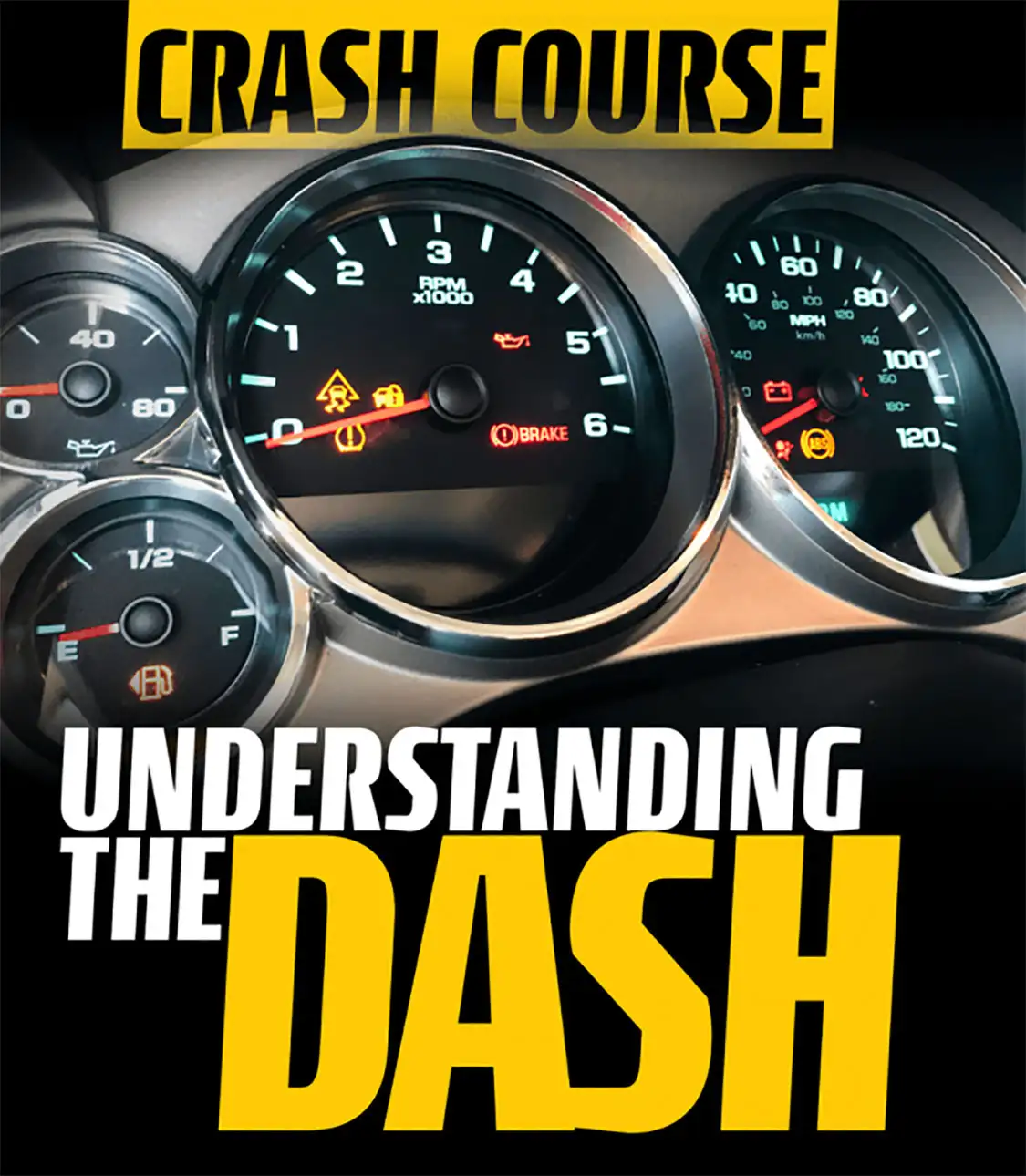
Nothing can ruin an enjoyable cruise faster than the surprise illumination of dashboard warning lights. Aside from running low on fuel or air pressure in the tires triggering an alert, there may or may not be much to worry about.
Usually, when the check engine light pops up out of nowhere, the natural next symbol that comes to mind is “$”.
But before you start sweating and stressing out, just take a deep breath, and remember—these trouble lights are meant to give you the soonest heads up of an issue that could have a simple, inexpensive solution IF addressed in a timely manner and not left to worsen over time. Let that last point sink in, and let’s keep rollin’.
“Out of sight, out of mind” is an all-too-familiar “fix” for dashboard lights. With the ability to plug in a code scanner and “clear” trouble lights, a lot of car or truck owners think that turning a light off cures whatever is going wrong underneath the hood or anywhere else that could pose a problem from bumper to bumper.
Code scanners are extremely helpful—don’t get us wrong. They are great for helping pinpoint the exact code or problem that makes the dashboard warning light pop up, but they should be used as diagnostic tools and not as an off switch.
Instead of sweeping the problem under the rug, understand why the lights on your vehicle’s dash are illuminating and what the heck the lights even mean.
If you haven’t taken a good look at your gauges and examined all of the symbols, they can be a bit confusing and read like some weird alien language; it must be tough to create a single symbol that represents a major system of your car or truck.
Some of them are familiar since they haven’t changed much over the years and actually make visual sense at first glance. Others, especially the ones that correspond to more modern conveniences, can be a little trickier to understand.
With increased on-board functions and safety features, there are bound to be more problems with all those factory-installed bells and whistles. So when your dashboard starts lighting up like a Christmas tree, you’ll have a better grip on what your vehicle is trying to communicate to you through all the bright symbols and indicators.
While not each and every light is explained here, some of the most common and troubling dashboard indicators have been expanded upon to help with understanding what your car or truck is telling you.
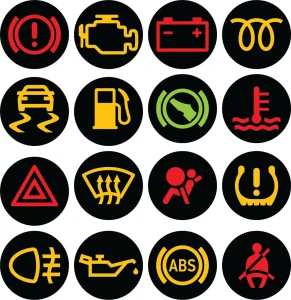
Maybe you have noticed over the years—or maybe you haven’t paid that close attention—that the colors of the indicator lights vary.
The red lights usually indicate the more serious issues that you’ll want to tend to immediately, if possible.
There are a combination of yellow and orange lights that will pop up every once in a while, and these are usually less urgent, but still important to address.
Green (and sometimes blue) lights are the least stressful and may mean that a system is on or they’re reminders to buckle up or that one of the doors isn’t closed all the way.
So when you see a symbol light up, first address what the problem is and then its severity based on its color.
The check engine light is the single most intimidating alert to pop up on the dashboard, except for the low fuel light, that always seems to pop up as soon as you pass the last gas station for miles. The engine light can mean a long list of things, from something as trivial as a gas cap that has been improperly placed back on after refueling to more serious problems like misfiring or an improper fuel mixture.
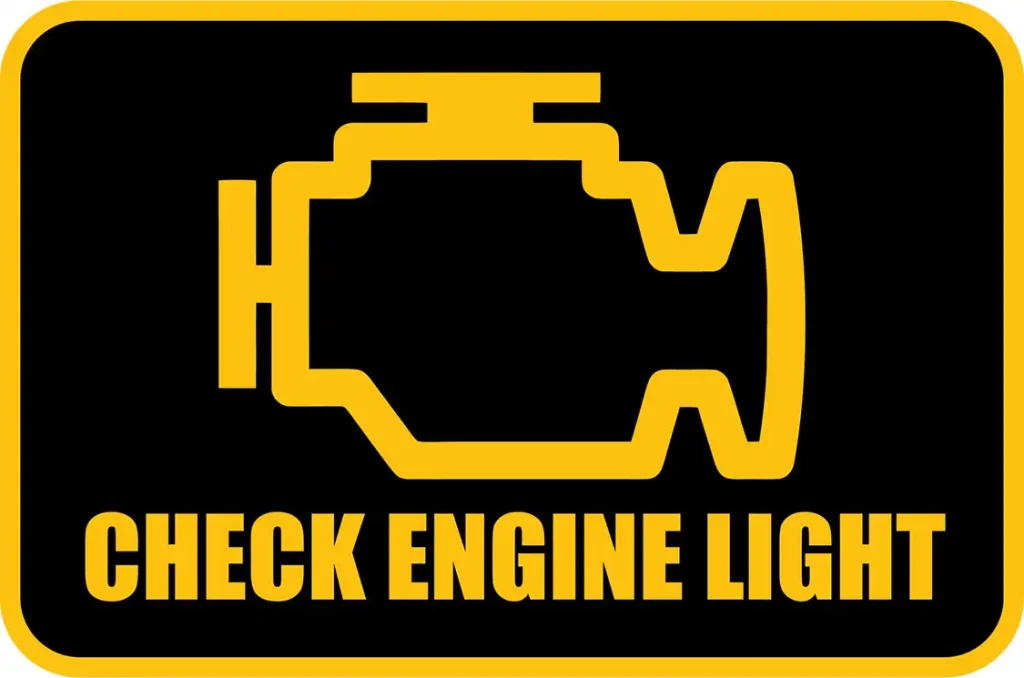
The Check Engine symbol has been given another indicating function by staying lit when there is a less urgent issue and flashing when immediate attention is necessary. If the light is blinking, turn off any unnecessary accessories that could be drawing from the engine, and decrease speed or safely pull over is possible.
These simple steps can save the engine from working harder than it needs to when the light is on. Thinking of towing? Don’t do it—at least not until the problem has been accurately detected and remedied.
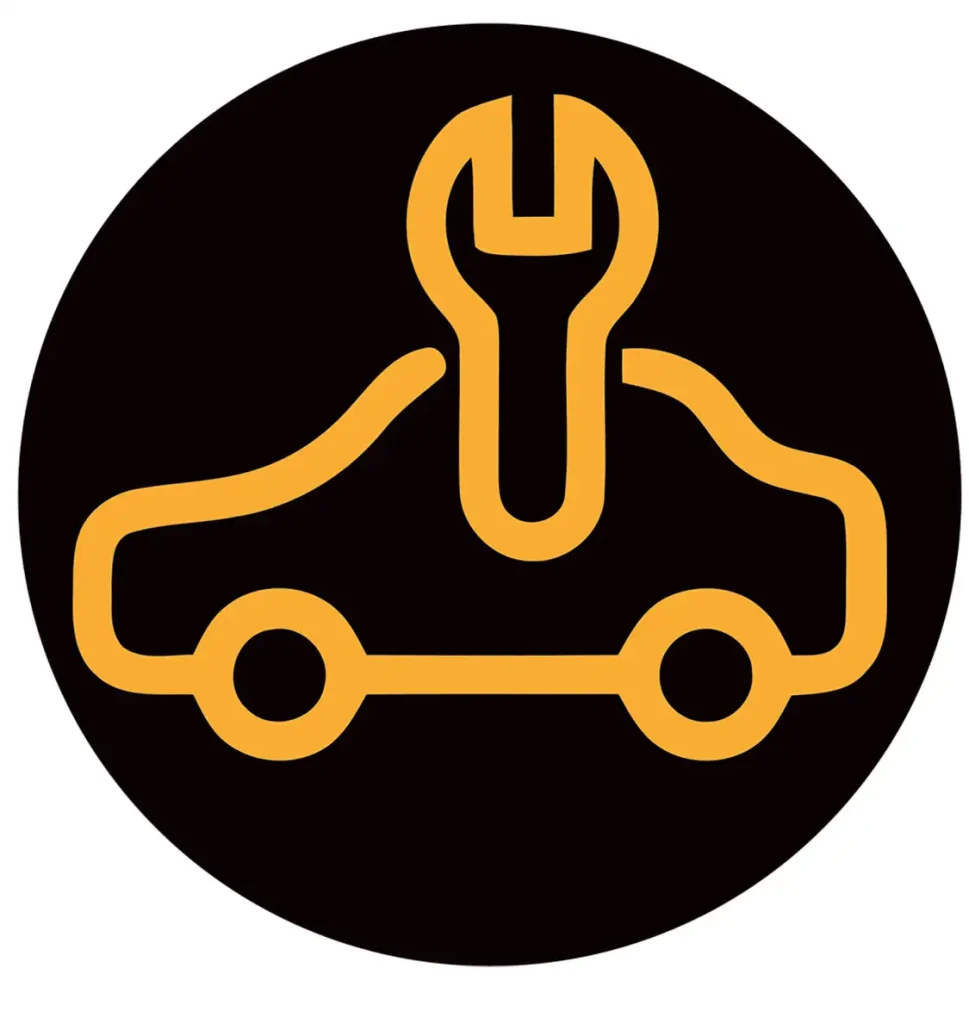
A Service Vehicle Soon light is different from the check engine light, as it is connected to the body control module. It detects lamp malfunctions such as headlights to taillights and turn signals, as well. Like the check engine light, it can mean a multitude of things, some of which are purely electrical communication errors within a system, or have to do with sensors that you’d never be able to guess without the help of a diagnostic tool or having a dealership or repair shop assess the issue.
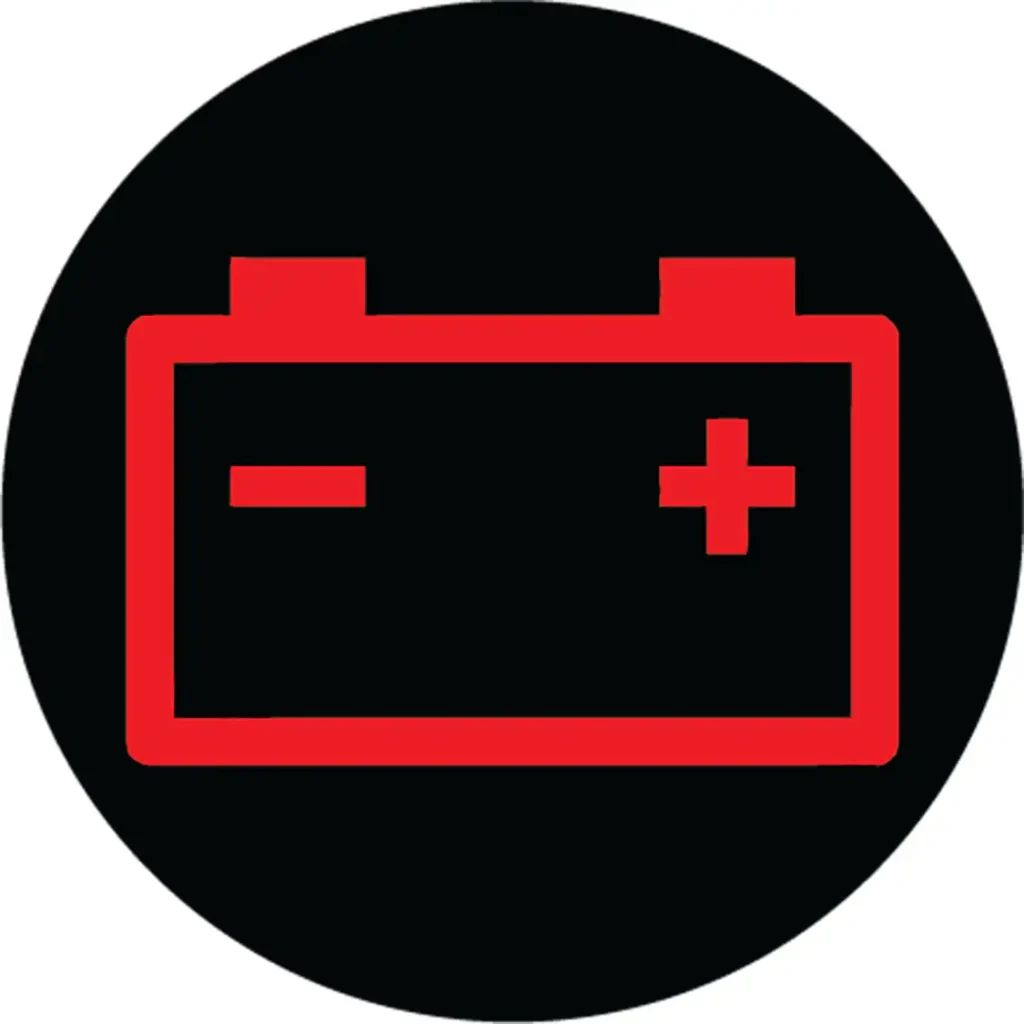
You’ll find that the Battery Service warning is always red and can mean a number of things about your truck’s charging system. There could be an issue at the battery terminals, a problem with the alternator, or simply that the battery is low on voltage and needs replacement. Don’t chance driving around and making too many unnecessary stops, or else you’ll more than likely end up stranded and have to phone a friend—or AAA.
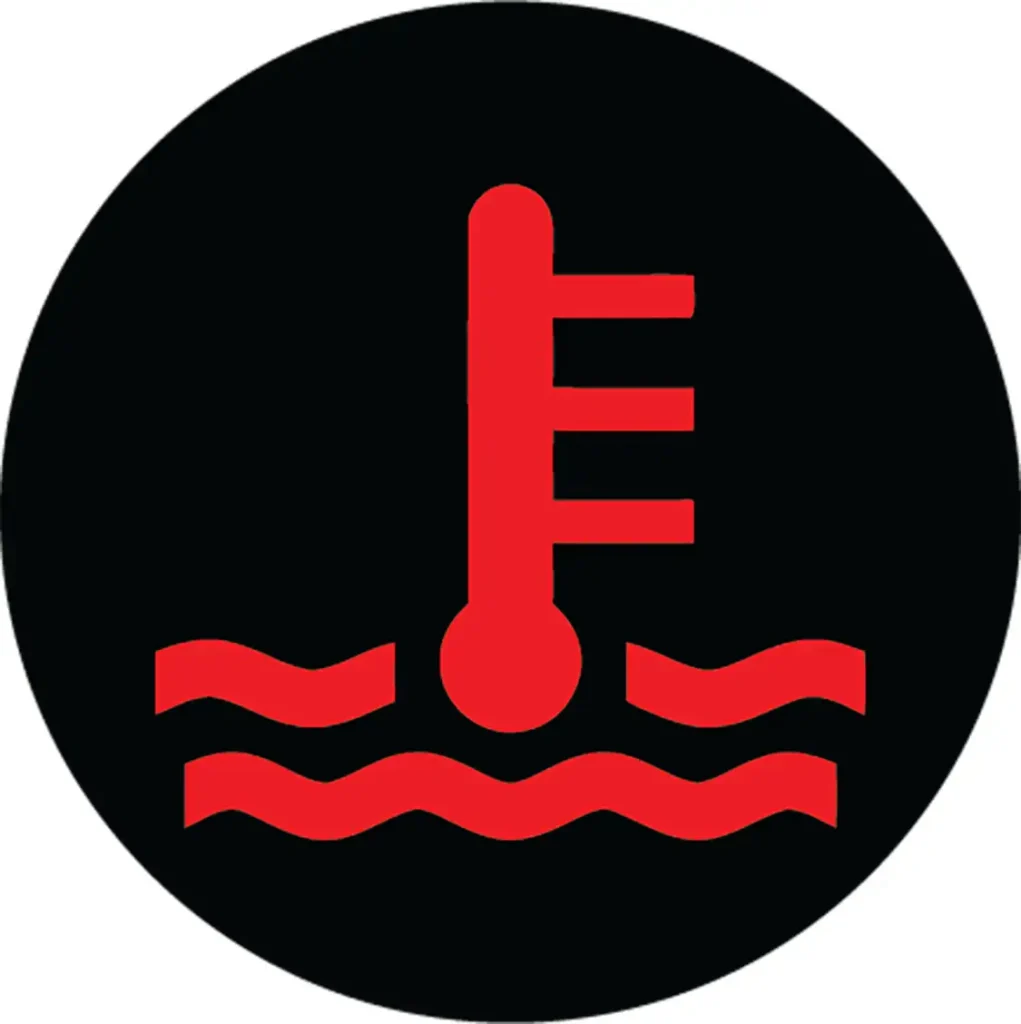
When the Temperature warning symbol lights up, you’d better pull over and pull over fast. The last thing you need is for you vehicle’s engine to overheat. Let the car or truck cool down, and check the coolant level, look for possible leaks, and make sure the fan and thermostat are operating correctly. Don’t push your car or truck when this light is on—consider it to be a stoplight.
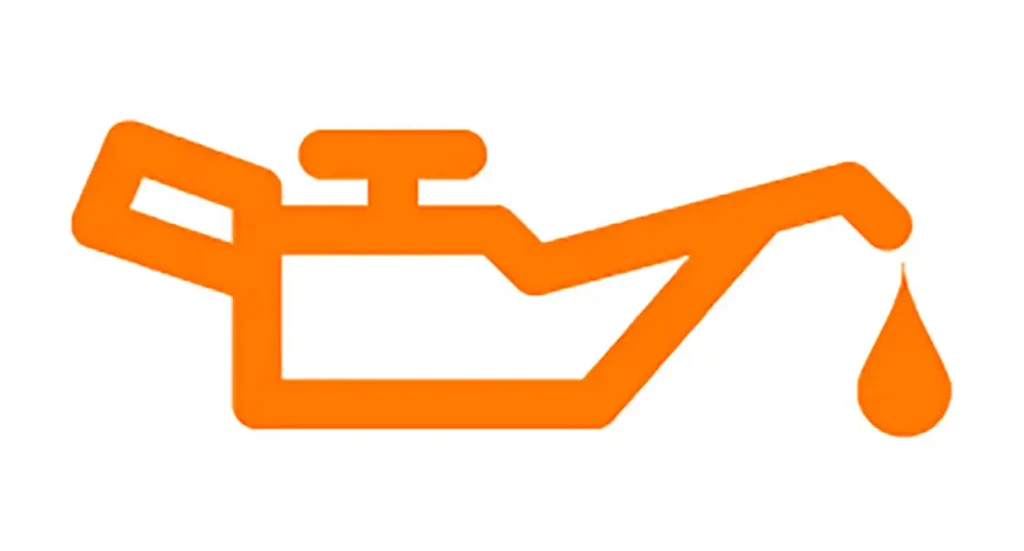
The Oil can or oil pressure warning light is one of the simple lights to decipher. If it stays illuminated, that means there is a lack of oil or loss of oil pressure in the system, or simply a faulty sensor. Since oil is the lifeblood of your engine, you’ll want to take a look into this ASAP by first adding oil if needed, and then have it looked at if the light doesn’t go away.
Another oil pressure light that can illuminate on the dash is an oil change reminder. A shop will usually slap a sticker inside of the windshield with a date and odometer reading to plan the next oil change. There’s nothing too tricky here; all the indicator means is that the life of the old oil has run its course, and it’s time for another oil change service. If this is the only light you have to worry about, consider yourself lucky.
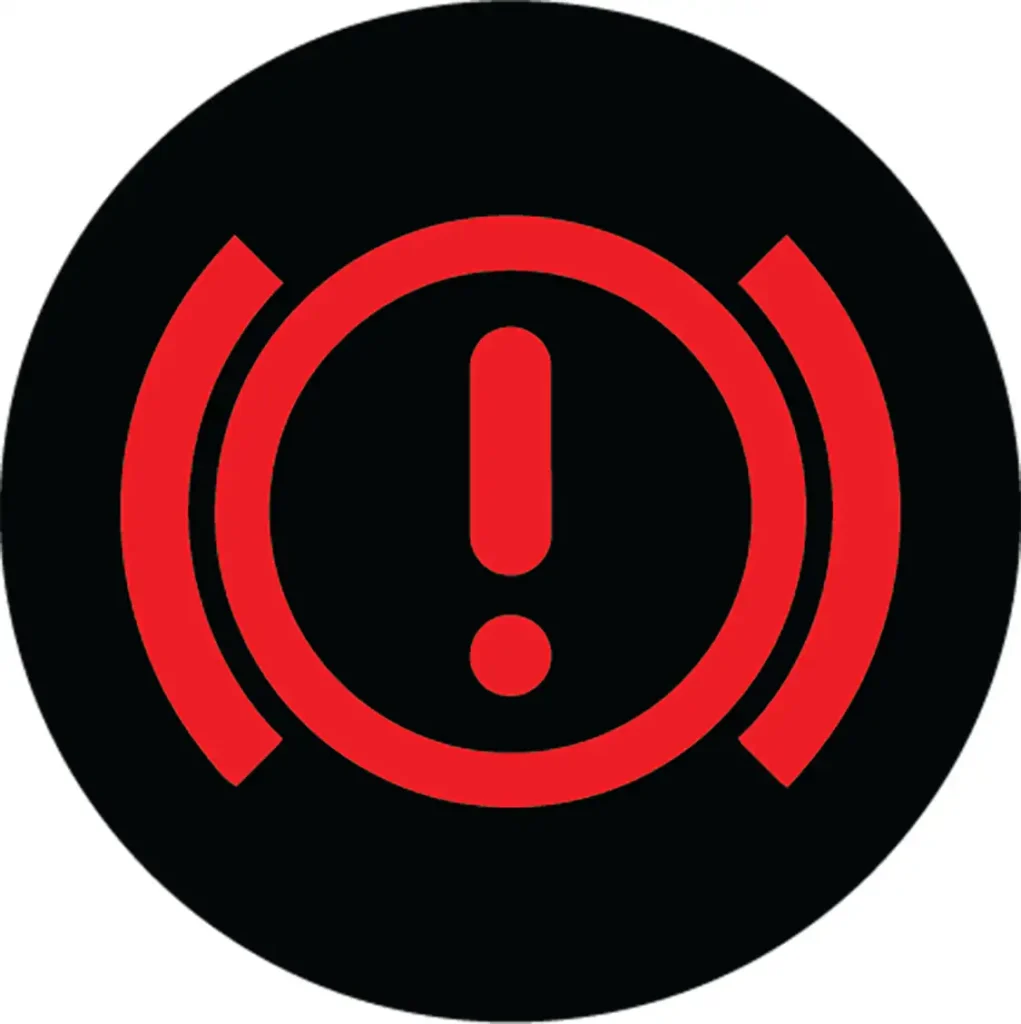
The e=”color: #800000;”>Brake System warnign light can mean a few things that will require your attention at your earliest convenience. Brake fluid could just be low, the parking brake could still be on or there may be an issue with the car or truck’s ABS system (which should have its own light on the dash, but if it doesn’t, do take notice to the general brake light). You don’t want to chance not having properly functioning brakes, so this is one of the sensitive lights to address.
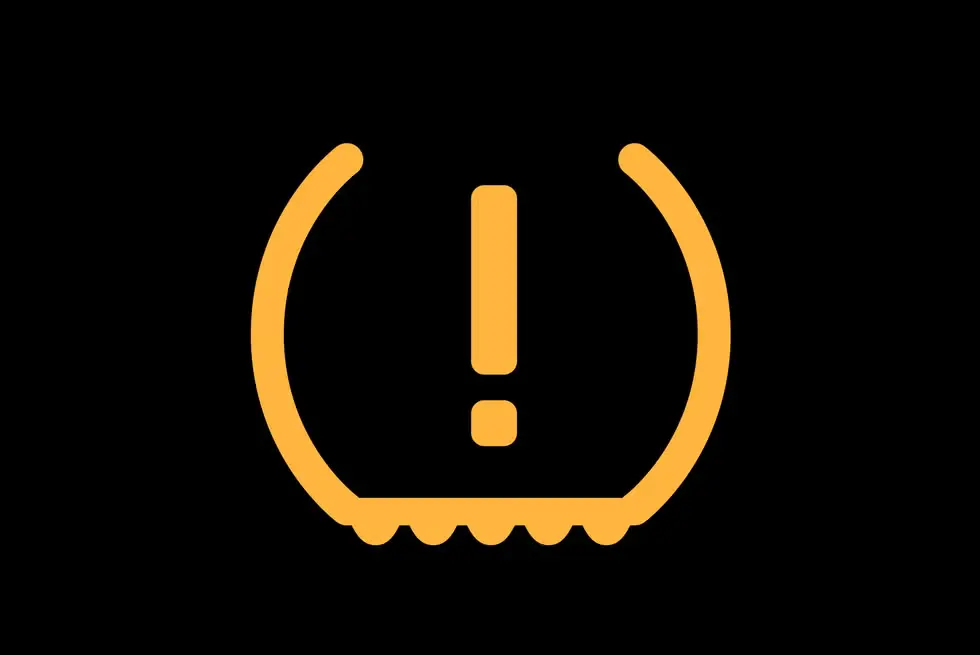
Modern vehicles are now equipped with a Tire Pressure Monitoring System (TPMS) at each tire that will alert when inflation pressure dips low. These sensors can sometimes be overly sensitive and become annoying with the alerts on the dash. When the light illuminates on the dash, add some air to the tires to the suggested pressure level. If you’ve recently swapped out the factory wheels and tires with aftermarket sets, it’s suggested to install the factory sensors to the new wheels. If not, be prepared for the TPMS light to be on at all times, and make it a point to eyeball tire inflation levels like we used to do it in the “old days.”
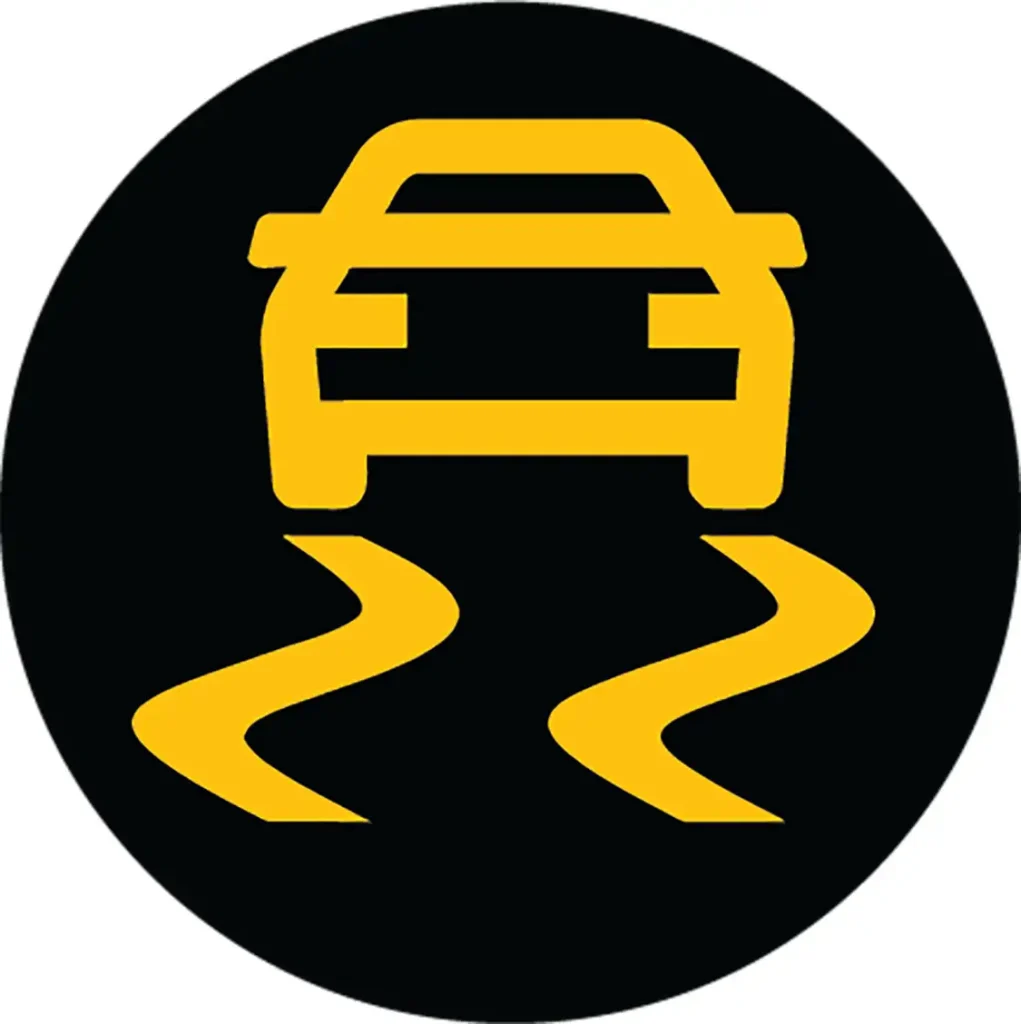
Traction Control, which helps prevent wheels from spinning on slippery surfaces, will automatically engage and the light on your dash will appear when your wheels start to slip. Turn off Traction Control if stuck in mud or snow and need to rock the car, or when you want to light up the rear tires and make a smoke show.

Airbag warning light is easy to spot — it usually looks like a person sitting with a big circle (that’s your airbag) in front of them. If it stays on after you start your vehicle, the airbag system is telling you something’s not right. It could be a sensor issue, a problem with the airbag module, or even a wiring connection gone bad under a seat. While this isn’t going to leave you stranded on the side of the road, it’s nothing to ignore. If you get into a wreck and your airbags don’t deploy because of a fault, you’ll wish you had fixed it sooner. Have a shop scan for codes and track down the issue so your safety system is ready to go when you need it most.
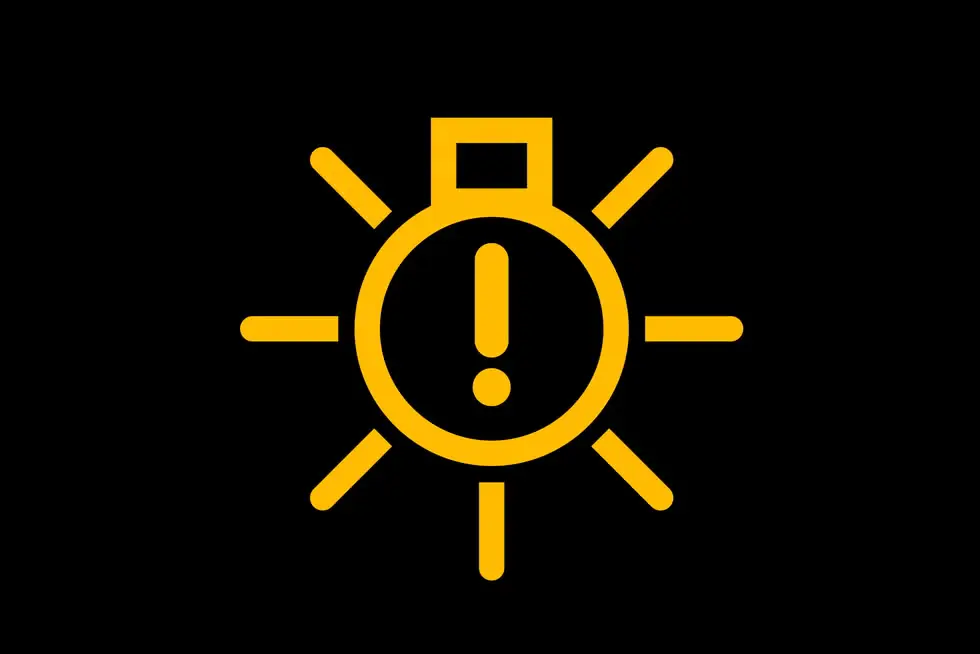
If you see lamp out indicator or something that looks like the sun with rays shooting out, your ride is trying to tell you a bulb is burned out somewhere. It could be a headlight, taillight, brake light, or even a license plate light. Modern systems can detect when one of these goes out, and while it’s not going to affect drivability, it can land you a ticket or make your truck less visible to others. Walk around your truck, find the dead bulb, and replace it before heading out again — it’s a quick fix that keeps you safe and legal.
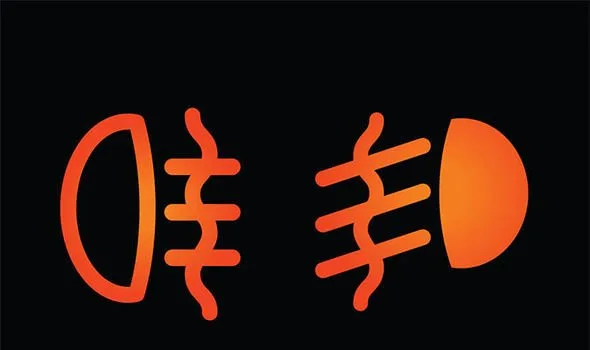
Fog light symbol means, when it’s green, it’s your front fog lights. If it’s amber, that’s the rear fog light. Fog lights are there to cut through nasty weather like heavy rain, fog, or snow – not to blind other drivers on a clear night. Flip them off when visibility is good, and keep them on standby for when the weather turns ugly.

A bright blue headlamp symbol means your high-beam are on. They’re great for lighting up dark back roads, but remember to turn them off when there’s oncoming traffic so you’re not the guy everybody’s flashing at.

If you see the bright blue headlamp symbol with the word “AUTO” underneath or nearby, you’ve got automatic high-beam. That system flips them on or off for you depending on traffic and lighting conditions. If it’s not working like it should, it could be a dirty sensor on your windshield or a system setting that needs tweaking.

Freezing temperature symbol means, the roads might be slick.” Usually it appears when temps dip to around 37°F (3°C) or lower. Nothing’s broken – it’s just a heads-up that black ice or frost could be lurking, especially on bridges and shaded spots. Use it as a reminder to back off the throttle a little and keep the shiny side up.
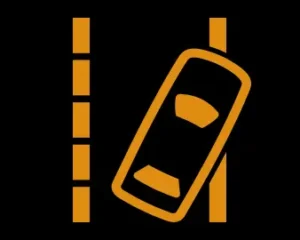
You’ll see an icon with lane markings and a car in between them, sometimes with “OFF” next to it. Lane-keep assist uses cameras to track the road lines and gently nudge you back if you start drifting. If the system’s off, it’s either because you turned it off, the weather is messing with the cameras, or something in the system needs attention. Not a dealbreaker for driving, but if you like the extra safety net, make sure it’s working and turned on.

Automatic stop-start active symbol means your engine has shut off temporarily while you’re stopped — at a light, in traffic, etc. — to save fuel. When you lift your foot off the brake, the engine fires back up and you roll out like normal. If you’re not a fan of it, many trucks and cars have a button to turn the feature off. If it stops working and you want it back, it could be tied to the battery, sensors, or system settings.

Gasoline drivers might get thrown off right away by additional symbols that diesel users are used to. Since the fuel system is dramatically different, there are issues that uniquely belong to diesel engines.

One symbol that will pop from time to time is the Glow Plug light, which indicates that the engine’s glow plugs are in the process of warming up. It is suggested to wait until this light turns off before attempting to start the engine. Duramax engines are equipped with glow plugs, while Cummins engines have grid heaters. Both can be started without these components being engaged, but the engine will start much easier in the cold with them primed and ready to go.
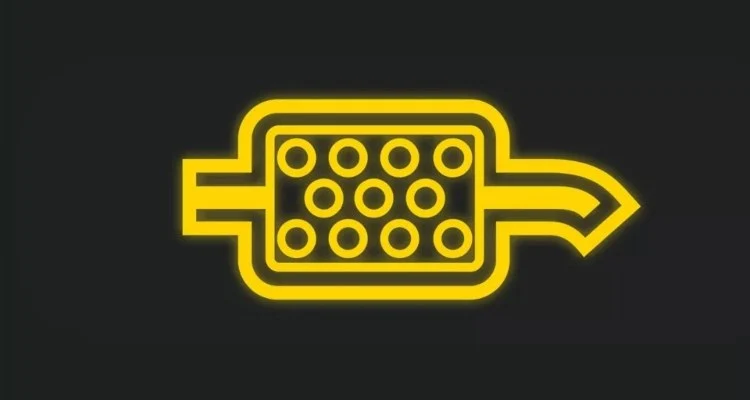
The DPF (diesel particulate filter) light, which corresponds to the diesel particulate filter, will illuminate when the filter fails its test and must be serviced. Introduced in 2007, this filter was designed to regenerate, or clean itself. If the system fails to do so, it must be done manually to prevent a reduction in engine power. If this red light comes on, it may also trigger the check engine light along with it.
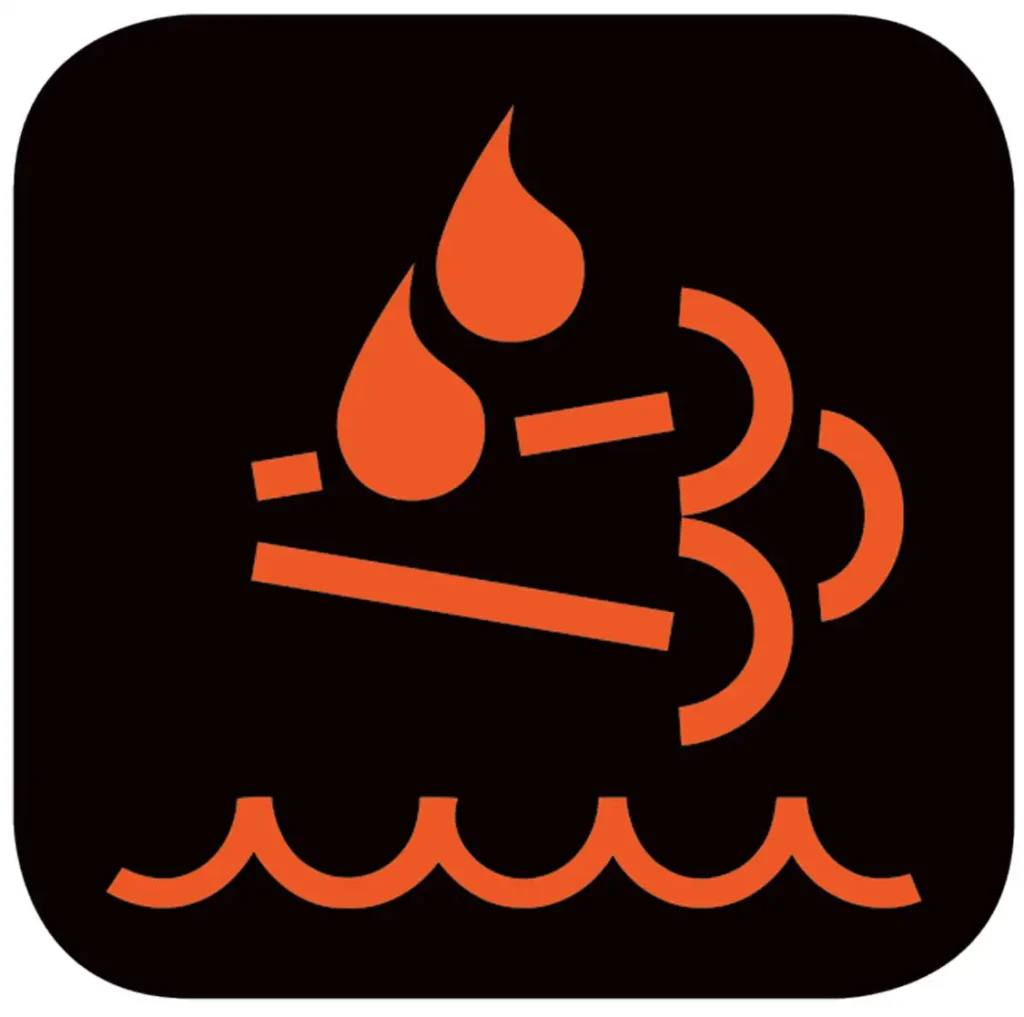
Diesel exhaust fluid (DEF) creates a catalytic reaction that extracts harmful particles from the exhaust. When this fluid is low, the corresponding light may appear on the dash, telling you to add fluid to the system, or that the fluid that is in the system is contaminated. In that case, the fluid must be replaced.
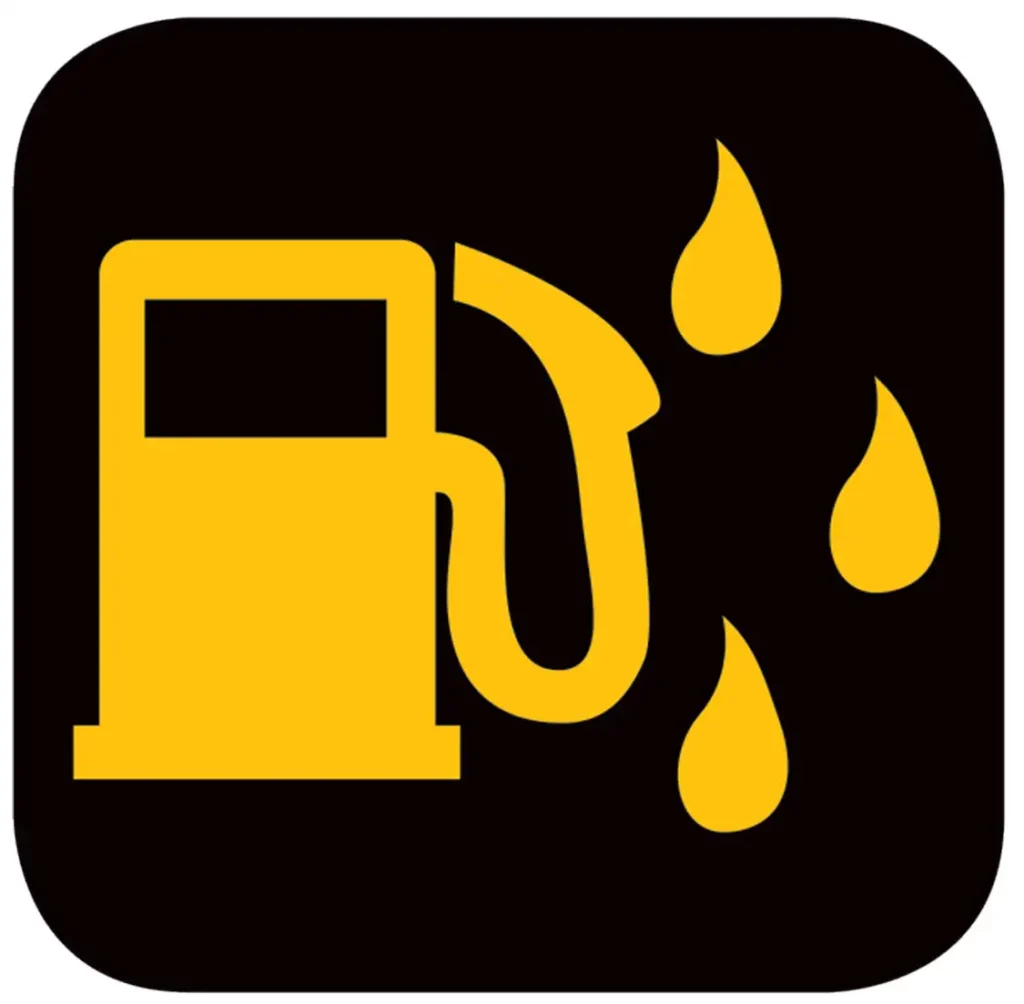
Water in fuel is also a big problem that diesel drivers face. There are multiple versions of symbols that translate this problem on the dash, but they will all alert to the same issue. A filter is designed to separate water from diesel fuel, when water sneaks its way into the fuel, you should see this alert, which will most likely warrant the changing of the fuel filter and draining of the fuel tank.
We break down the most common Chevrolet truck engine codes and show you how to check them.
When retrieving Chevy trouble codes with an OBD II scan tool, proceed as follows:
1. Connect scan tool to the 16-pin data link connector (DLC) located underneath the steering column. The connector may have a removable cover.
2.Turn the ignition on.
3.Follow scan tool manufacturer’s operating instructions to access the Diagnostic Trouble Codes (DTC’s).
Remember, these are manufacturer specific codes only. Refer to a Generic OBD II code list for definitions on all other Chevy diagnostic trouble codes.
Note: All makes and models function differently, and use variations of symbols that pretty much mean the same things. Whatever you drive, you should be able to detect the problem by either referring back to this handy issue of your favorite magazine, flipping through your truck’s owners manual, making a pit stop at a local dealership, or spending some time with Google.
A “DPF full” light on a Kenworth T680 indicates that the Diesel Particulate Filter (DPF) has reached its capacity for storing soot and needs to be regenerated or cleaned. This warning typically suggests that the system has not been able to perform a regeneration process automatically while the truck is in operation.
What is a DPF?
Why Does the DPF Light Come On?
What Should You Do?
By addressing the DPF full light promptly, you can avoid potential performance issues and maintain compliance with emissions standards.
Absolutely, a low voltage issue can significantly impact the performance of a Kenworth T680. Here’s how:
Effects on Performance
Potential Symptoms
Causes
Solutions
Addressing low voltage issues promptly can help maintain the optimal performance of your Kenworth T680, ensuring reliability and efficiency on the road.
How to Stop Loud Beeping in a Truck
Loud beeping in trucks can be irritating and distracting for drivers. Fortunately, several steps can be taken to address this issue:
By following these steps, drivers can usually pinpoint the cause of the loud beeping and take appropriate measures to stop it. Regular maintenance and attentive checks can prevent such issues from arising unexpectedly.
When a yellow warning light pops up on your dashboard, it’s signaling that something needs your attention, though it may not be an immediate emergency. Here’s how to address it effectively:
By promptly addressing yellow warning lights, you’re ensuring your vehicle remains reliable and safe on the road.
Maybe you have noticed over the years—or maybe you haven’t paid that close attention—that the colors of the indicator lights vary. The red lights usually indicate the more serious issues that you’ll want to tend to immediately, if possible. There are a combination of yellow and orange lights that will pop up every once in a while, and these are usually less urgent, but still important to address.
Green (and sometimes blue) lights are the least stressful and may mean that a system is on or they’re reminders to buckle up or that one of the doors isn’t closed all the way. These colors are used more so to indicate that a system or function is turned on, such as high beams or the engine fan, rather than signaling a malfunction. This distinction helps ease the driver’s mind, knowing that these lights often signify normal operation rather than urgent issues.
So when you see a symbol light up, first address what the problem is and then its severity based on its color. Understanding the color codes can not only aid in quick assessment of the situation but also ensure that you’re responding appropriately to what your vehicle is trying to communicate.
Generally, these lights are not associated with urgency and are considered informational rather than a cause for concern.
The appearance of these lights should be interpreted as a notification that a feature is active rather than a warning.
An example of a function could be the activation of high beams or the engine fan.
Maybe you have noticed over the years—or maybe you haven’t paid that close attention—that the colors of the indicator lights vary. The red lights usually indicate the more serious issues that you’ll want to tend to immediately, if possible. These red warnings are not to be ignored, as they often signal critical problems such as engine overheating, brake failure, or other malfunctions that could compromise your vehicle’s safety and performance. Immediate attention is required to prevent potential damage or unsafe driving conditions.
There are a combination of yellow and orange lights that will pop up every once in a while, and these are usually less urgent, but still important to address. They often serve as warnings for issues like low fuel, maintenance reminders, or tire pressure alerts, allowing you some time to schedule necessary repairs or checks.
Green (and sometimes blue) lights are the least stressful and may mean that a system is on, or they’re reminders to buckle up or that one of the doors isn’t closed all the way. These lights typically indicate normal operation or simple reminders that help enhance your driving experience.
So when you see a symbol light up, first address what the problem is and then its severity based on its color. Knowing what each color signifies can help you prioritize your actions and maintain your vehicle’s reliability and safety on the road.
The situation is urgent and demands immediate attention.
A red light signifies a more serious issue that needs to be addressed.
Maybe you have noticed over the years—or maybe you haven’t paid that close attention—that the colors of the indicator lights vary. The red lights usually indicate the more serious issues that you’ll want to tend to immediately, if possible.
Red lights are a signal of urgency, often pointing to critical issues that require immediate action to prevent damage or ensure safety. It’s essential to stop driving and investigate these warnings as soon as they appear.
There are a combination of yellow and orange lights that will pop up every once in a while, and these are usually less urgent, but still important to address. Yellow lights are cautionary alerts, suggesting that something needs attention soon, but not necessarily right away. Think of them as a call to schedule a check-up or to monitor a particular system more closely.
Green (and sometimes blue) lights are the least stressful and may mean that a system is on or they’re reminders to buckle up or that one of the doors isn’t closed all the way. These colors typically indicate that a feature is active, such as high beams or cruise control. They serve as helpful reminders rather than warnings.
So when you see a symbol light up, first address what the problem is and then its severity based on its color. Understanding this color-coded system can help you prioritize vehicle maintenance and ensure a safer driving experience.
Yes, the light’s color correlates with urgency: red is more urgent than yellow, while green and blue are not warnings.
Green and blue lights typically show that a system or function is currently active, not malfunctioning.
Yellow lights suggest issues that are less urgent but still need to be addressed.
All makes and models function differently, and use variations of symbols that pretty much mean the same things. Whatever you drive, you should be able to detect the problem by either referring back to this handy issue of your favorite magazine, flipping through your truck’s owner’s manual, making a pit stop at a local dealership, or spending some time with Google.
For those who prefer a more direct approach, start by checking your vehicle’s owner’s and operator’s manuals. These are usually tucked away in your glovebox, ready to be your first line of defense against those puzzling dashboard lights. If you prefer digital resources, many manufacturers offer online manuals and support sections on their websites, providing easy access to detailed information specific to your vehicle’s make and model.
Share Link